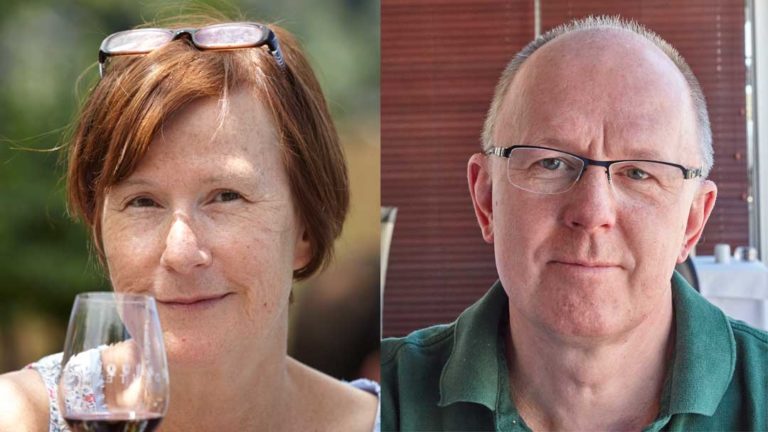

 Creative ideas for new times
Creative ideas for new times
Creativity thrives in crises. That’s how the saying goes, isn’t it? We hope so. Because the wine industry will need all the ingenuity, it can muster.
The wine world is often accused of being conservative, too set in its old habits. But changes are happening. Even if people do not always realise it. A good example is irrigation. We often hear people say that it is forbidden in Europe. Irrigation is something you only do in the New World. But today a quarter of the Italian vineyards and 30% of the Spanish ones are irrigated. France does not need as much (it is further north), but you often see it in the Languedoc. Things change.
Is Bordeaux more conservative than other regions? In that case, they now have the chance to show another face. Even before the corona crisis, they struggled with declining sales in France and in China, as well as the uncertainty surrounding brexit. How to think creatively in Bordeaux? Maybe consider starting online sales directly to the end customer? This is a quite dramatic change in Bordeaux. Traditionally the chateaux don’t deal much with end customers because they sell their entire production through “la place de Bordeaux” via brokers and negociants.
Maybe it’s time to fundamentally reform the ancient, over-aristocratic system of the primeur tastings, which hardly is a good way to judge wines anyway.
Why not start producing single variety wine as an alternative to all Bordeaux blends? I think it would be a shrewd move in all its simplicity. I just read about the cooperative in Listrac/Moulis-en-Médoc, which has had great success with its 100% petit verdot. A few do similar things, but not many. (Read, for example, about the sauvignon gris from Château Carsin in this month’s Brief.)
Petit verdot and cabernet franc are trendy grapes today, so why not bring them forward? I realise that not all chateaux in Bordeaux have these grapes and not in large quantities. But cabernet sauvignon is, after all, the world’s most popular grape and merlot is not far behind. So how difficult can it be to sell Bordeaux? I already hear objections about chateaux, prestige and terroir. But as I said, new times require radical changes.
It is a good thing to have so-called “locomotives”, famous estates that help bring out the lesser-known ones. But today, Bordeaux may be suffering from, rather than benefiting from, the immensely famous “grand cru classés”. Thanks to them, Bordeaux has gained a reputation for being far too expensive and only making luxury wines. (This is of course not true. Bordeaux is an area with many excellent and affordable wines, as long as you ignore the celebrities.)
Champagne seems to be heading towards a brilliant vintage. But it also seems that the permitted yield will be miniscule, although there are plenty of grapes and the quality promises to be excellent. The houses are afraid of choke-full inventories and price dumping and therefore want to limit supply on the market. Market manipulation rather that creative product development.
If you want to be really creative, why not let the growers pick a little bit more of their beautiful grapes this autumn and instead of champagne, let them make still wines of the plentiful grapes. Because the world right now apparently doesn’t want to drink as much champagne as it used to. There is even an appellation for still wine in Champagne, Coteaux Champenois, white and red. With the warm weather this year, these wines are bound to be excellent. Imagine a 100% pinot meunier, still wine. (We have actually tried one. Very good.) It could be a smash hit, in the same way as petit verdot in Bordeaux. Here, too, I think there will be objections, but changes do happen. Just look at irrigation in Europe.
This is an issue that all wine producers and wine regions are grappling with today. What can they do, in these times when demand is weak?
Do you have any suggestions?
Wine tours, The Brief, and more
In July, we usually arrange the very last details for the autumn wine tours. So again, this year. The big difference this year is, as you can guess, that we have fewer tours than we usually have.
We will have two “open” scheduled tours this autumn, to Champagne in September and to the Douro Valley in October. We are really looking forward to getting out in the vineyards again, and we also know that many of our travellers are looking forward to coming to the wine regions.
However, some have chosen to postpone wine travel until next year, and we also very much look forward to seeing you then. Next year starts with three “big tours” to the southern hemisphere.
But we have not been idle in any way during this period. Rather the opposite. We have and have had several other projects underway that have effectively filled our time (e.g. a new book and new websites).
We have also started two series of articles. One about grapes where we go through some of the world’s most famous grape varieties (and some not so well known), variety-by-variety, with descriptions and tasting tips. The second series of articles is about organic, biodynamic, natural and sustainable wine. We explain the concepts and explain exactly what these different methods mean. Something that is apparently really needed, judging by all the strange and far from correct information about this that we hear and read. You will see several articles in these two series during the summer.
We have also spent a lot of time (or rather dinners) getting through an extensive collection of “natural wines”. It has been an interesting project that has been filled with both discoveries and some disappointments. Above all, it has shown that the concept of “clean wines” (the latest trend that you can read about in the Brief) is probably quite far from away from the concept of “natural wines”.
Enjoy the summer and take good care of yourself!
Britt & Per
PS: Recommend to your friends to read the Brief or – forward it to them (click here to send them the Brief)!
What’s on at BKWine Tours
- South America, Chile and Argentina, January 18 – 31, 2021
- New Zealand, February 18 – March 5, 2021
- South Africa, March 17 – 26, 2021
- Bordeaux, April 21-25, 2021
- Champagne, May 19-23, 2021
- Champagne, September 22-26, 2021 (possible combination with Bordeaux)
- Bordeaux, September 29 – October 3, 2021 (possible combination with Champagne)
For more information please contact us on email or on phone (we’re on French time), or go to our wine travel site on www.bkwinetours.com!
We also make custom designed wine tours – on-demand tours for you and a group of friends, for your company (maybe to scout new winegrowers?), for a special event… We can combine winery visits and wine touring with other activities: gastronomic workshops, visit to an oyster farm, truffles hunting, cheese making, and more. More info on the custom designed and bespoke BKWine wine tours and travel here!
Read our book(s)
We have written several wine books, nine at the last count. One of them has been translated to English; the others are (so far) only available in Swedish. This is the one that is available in English: Biodynamic, Organic and Natural Winemaking, Sustainable Viticulture and Viniculture
All our books are on wine, but on different subjects: wines of the Languedoc, wine growing and wine making, the wines of France, Tuscany, Bordeaux, Piedmont, Burgundy, Champagne. Several have won prestigious prizes and awards. Read more on our wine books.
From the World of Wine
In Brief
In short, news and stuff from the world of wine.
Stricter rules and new denominations for cava, again
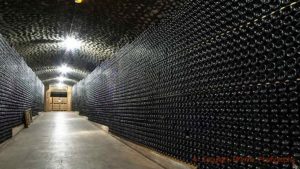 Spanish cava has once again tightened its rules and, at the same time, DO Cava takes the opportunity to introduce some new words for us to remember. From now on, cava with more than nine months of ageing is called cava de guarda. With over 18 months of ageing, the name is cava de guarda superior. This latter group includes Reserva, Gran Reserva and Paraje Calificado. Thus, Reserva now requires 18 months of ageing on the lees instead of the 15 months that have applied so far. The vintage must be mentioned on the label. Gran Reserva still needs 30 months.
Spanish cava has once again tightened its rules and, at the same time, DO Cava takes the opportunity to introduce some new words for us to remember. From now on, cava with more than nine months of ageing is called cava de guarda. With over 18 months of ageing, the name is cava de guarda superior. This latter group includes Reserva, Gran Reserva and Paraje Calificado. Thus, Reserva now requires 18 months of ageing on the lees instead of the 15 months that have applied so far. The vintage must be mentioned on the label. Gran Reserva still needs 30 months.
Cava de Paraje Calificado was created in 2017 to enable producers to put the spotlight on some, particularly excellent vineyards. This category requires at least 36 months of ageing. Normal cava (now called cava de guarda), however, largely dominates production, with around 85% of sales. These wines must be left on the yeast lees for at least nine months before disgorging. A novelty is also that estates that have their own vineyards and produce their own cava will be identified with a particular label on the bottle. DO Cava will also more actively market organic and sustainable cava. Read more docava
Are clean wines the same as natural wines? Cameron Diaz may have the answer
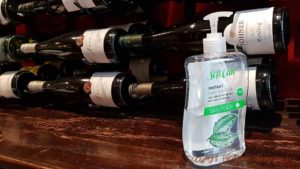 In the USA, the latest trend seems to be “clean wines”. Whether clean wine is more or less the same as natural wine is not clear. Hollywood star Cameron Diaz recently launched her own brand of “clean wines” because she wants to know what she drinks, she says. She learned about winemaking when she looked for a winemaker who could produce her wines, and she was appalled by all the “additives that can be found in a wine”. We’ve heard all that before. “Clean” will undoubtedly sound tempting to many consumers, but when it comes to wine, and here natural wine fans probably agree with me, it sounds somewhat antiseptic. Purified of anything that can add character. Diaz’ wines are, in fact, quite normal. They have been fermented with cultured yeast and yeast nutrients, stabilised with sulphur dioxide, max 100 mg/l, has been given a little potassium bitartrate to speed up the cooling stabilization and has been clarified with pea protein or bentonite clay. Read more drinkavaline
In the USA, the latest trend seems to be “clean wines”. Whether clean wine is more or less the same as natural wine is not clear. Hollywood star Cameron Diaz recently launched her own brand of “clean wines” because she wants to know what she drinks, she says. She learned about winemaking when she looked for a winemaker who could produce her wines, and she was appalled by all the “additives that can be found in a wine”. We’ve heard all that before. “Clean” will undoubtedly sound tempting to many consumers, but when it comes to wine, and here natural wine fans probably agree with me, it sounds somewhat antiseptic. Purified of anything that can add character. Diaz’ wines are, in fact, quite normal. They have been fermented with cultured yeast and yeast nutrients, stabilised with sulphur dioxide, max 100 mg/l, has been given a little potassium bitartrate to speed up the cooling stabilization and has been clarified with pea protein or bentonite clay. Read more drinkavaline
Strandåkra Winery, still and sparkling wines from Sweden
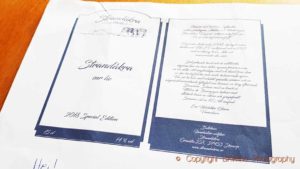 Eva Nilsdotter Olsson is an organic winemaker and a sommelier. We find her on the south coast of Skåne, in the very south of Sweden. She founded Strandåkra Vingård (Strandakra Winery) in 2004 and is organically certified. We have tasted her Strandåkra sur lie 2018. “I only made 100 bottles of this wine,” says Eva. The grapes are solaris and melon de bourgogne. Crispy apples dominate the nose and the palate with some apple seeds that give structure. Lemon and grapefruit linger in the aftertaste. The wine is very fresh. The acidity is a bit too dominant when you drink it on its own, but it is well balanced when you have it with food.
Eva Nilsdotter Olsson is an organic winemaker and a sommelier. We find her on the south coast of Skåne, in the very south of Sweden. She founded Strandåkra Vingård (Strandakra Winery) in 2004 and is organically certified. We have tasted her Strandåkra sur lie 2018. “I only made 100 bottles of this wine,” says Eva. The grapes are solaris and melon de bourgogne. Crispy apples dominate the nose and the palate with some apple seeds that give structure. Lemon and grapefruit linger in the aftertaste. The wine is very fresh. The acidity is a bit too dominant when you drink it on its own, but it is well balanced when you have it with food.
I got associations to good quality base wines in Champagne when I tasted it and actually, in 2019, Eva only made sparkling wines (a good idea in the cool climate of Sweden). She has made 278 bottles of Strandåkra 2019 Brut Nature. The grapes are solaris and seyval blanc. She has her own equipment, including pupître, for the entire production of sparkling wine according to the traditional method. Eva mainly focuses on selling her wines to local restaurants. We wish her best of luck! Read more strandakra
Pressure on growers in Champagne: No agreement on yields 2020 and harvest approaches by leaps and bounds
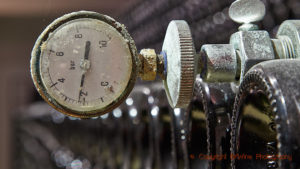 It has been a warm spring and summer in northern France in 2020. It is rumoured that the harvest in Champagne will start as early as around August 20. Therefore, it is urgent to determine this year’s maximum allowed yield. Every year, the houses and the grape growers together decide how many kilos of grapes you will be allowed to harvest, taking into account how much they think champagne overall will sell and the economic situation in the world. A decision should have been made on July 22, but for once, the houses and growers did not agree.
It has been a warm spring and summer in northern France in 2020. It is rumoured that the harvest in Champagne will start as early as around August 20. Therefore, it is urgent to determine this year’s maximum allowed yield. Every year, the houses and the grape growers together decide how many kilos of grapes you will be allowed to harvest, taking into account how much they think champagne overall will sell and the economic situation in the world. A decision should have been made on July 22, but for once, the houses and growers did not agree.
Usually, they are good at compromising in Champagne. But now the positions seem locked. Champagne sales have fallen sharply since the beginning of the corona crisis, and it is estimated that sales in 2020 will fall by around 100 million bottles. (A normal year around 300 million bottles are sold.) The houses, who buy grapes, want as low a yield as possible. There is talk of 7,000 kilos per hectare or less. The grape growers, not least those who make their own champagne, want a more normal yield, perhaps 10,000 kilos. Everything indicates that the quality will be exceptional, so it must feel sad not to be allowed to pick your grapes if you know you can sell what you produce and know that the wine will be excellent. Read more france3
Travel: Travel with us at BKWine on a wine tour to Champagne
Do you need to wash the grapes before fermentation?
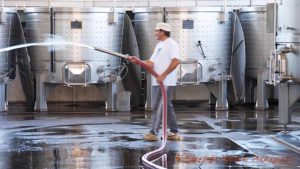 If we buy table grapes to eat, we most certainly rinse the bunch under running water before we eat the grapes. But have you ever seen a winemaker rinse his grapes with water after harvest? No, neither have we. But maybe that’s about to change.
If we buy table grapes to eat, we most certainly rinse the bunch under running water before we eat the grapes. But have you ever seen a winemaker rinse his grapes with water after harvest? No, neither have we. But maybe that’s about to change.
Some French oenologists believe this is the future, according to La Vigne. You can connect a machine to a vibrating sorting table that washes the hand-harvested grape clusters with low pressure water and dries them with hot air at the end of the table. Treatment spray residues and dust are washed away, it is claimed. There is no risk of dilution according to the inventors. Whether the wild yeast flora also disappears is unclear at present. (But honestly, we don’t see this as catching on very much. The need to do it is not evident.)
Ordinary crown cap for sparkling wine?
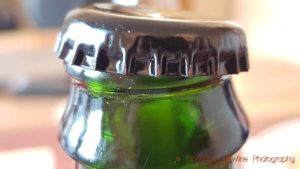 A reader of our Brief had seen an advertisement for a sparkling wine called Bubbly Rosé which was sealed with a regular crown cap (old fashioned beer bottle cap). She wanted to hear more about that. Actually, a crown cap is in a way an ideal closure for a sparkling wine. Champagne and other sparkling wines made with a second fermentation in the bottle are aged in the producers’ cellars for many years closed with a crown cap. It can in extreme cases be for 10-15 years. Therefore, there is no doubt that this is an excellent and reliable closure.
A reader of our Brief had seen an advertisement for a sparkling wine called Bubbly Rosé which was sealed with a regular crown cap (old fashioned beer bottle cap). She wanted to hear more about that. Actually, a crown cap is in a way an ideal closure for a sparkling wine. Champagne and other sparkling wines made with a second fermentation in the bottle are aged in the producers’ cellars for many years closed with a crown cap. It can in extreme cases be for 10-15 years. Therefore, there is no doubt that this is an excellent and reliable closure.
But who wants to open a bottle of champagne with a beer opener? Champagne and other prestige sparkling wines are probably not ready for a change in that respect. Much of the appeal in them is in the glossy image. But, in fact, the sparkling specialist Pieter Ferreira, winemaker at Graham Beck in South Africa, has plans start using the crown cap as a closure. And on more unpretentious, modern bubbly, from the Loire Valley to California, the crown cap is seen more and more. And why not? It is both cheaper and easier to open.
And, believe it or not, some ten years ago there was a champagne producer who tried to launch a range of champagnes with a very cleverly designed crown cap (see how it looked and worked on our video) but this was blocked by the regulators and the initiative fizzled.
Travel: Travel with us at BKWine on a wine tour to Champagne
South African summer wine recommendations from Craven Wines in Stellenbosch
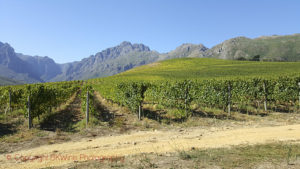 South African Craven wines is an exciting wine estate that has been ambitiously run since 2011 by Mick and Jeanine Craven from South Africa and Australia respectively. The vineyards are located in different places around Stellenbosch. We have selected a few of their wines that will make for excellent summer drinking.
South African Craven wines is an exciting wine estate that has been ambitiously run since 2011 by Mick and Jeanine Craven from South Africa and Australia respectively. The vineyards are located in different places around Stellenbosch. We have selected a few of their wines that will make for excellent summer drinking.
Craven Cinsaut 2019, Stellenbosch, South Africa. A little fuller in style than most cinsault wines is but still easy drinking, refreshing with a lovely fruit. Best enjoyed a little bit chilled. Grapes come from old bush vines. No. ~20 euro
Craven Pinot Gris 2019, Stellenbosch, South Africa. Pinot gris is considered a white grape but it is not really “white” (or rather, green). Its skin is more pinkish. This wine gets both colour and character from some 8 days of skin contact. Call it an orange wine if you like. Aged in old oak barrels. ~18 euro
Craven Clairette Blanche 2017, Stellenbosch, South Africa. Clairette is a southern French grape that has been present in Stellenbosch for a long time but has now almost disappeared. Craven has what may be the only clairette vineyard left. Just over 11% alcohol but completely dry. ~20 euro.
Read more on the producer Craven Wines.
Travel: Travel with us at BKWine on a wine tour to South Africa
Features
Features that we have published during the past month, with lots of reading for you.
New city guide: Reims, the capital of Champagne
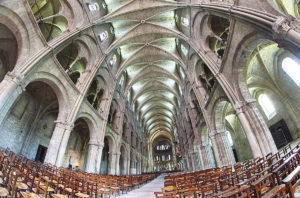 Reims is the largest city in Champagne with around 200,000 inhabitants. Some of the most famous Champagne houses have their cellars here, but the city also has other industries and a large university. The fast train from Paris will take you to Reims quickly and smoothly in just 45 minutes. In 125 miles of underground chalk cellars, millions of champagne bottles are aged in cool temperature. Some cellars were originally quarries. Some of them began to be excavated as early as the 4th century. Builders used the stone for houses and churches. Later on, wine producers excavated cellars in the 19th and 20th centuries specifically for the ageing of their Champagne.
Reims is the largest city in Champagne with around 200,000 inhabitants. Some of the most famous Champagne houses have their cellars here, but the city also has other industries and a large university. The fast train from Paris will take you to Reims quickly and smoothly in just 45 minutes. In 125 miles of underground chalk cellars, millions of champagne bottles are aged in cool temperature. Some cellars were originally quarries. Some of them began to be excavated as early as the 4th century. Builders used the stone for houses and churches. Later on, wine producers excavated cellars in the 19th and 20th centuries specifically for the ageing of their Champagne.
Read more in our new city guide on Reims in Champagne on BKWine Tours.
Travel: Travel with us at BKWine on a wine tour to Champagne
A Finnish winemaker at Chateau Carsin in Bordeaux makes unusual and exciting wines | Britt on Forbes
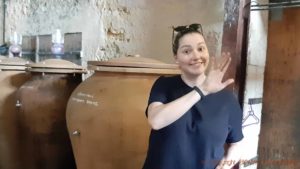 Château Carsin has 20 hectares of which 12 are planted with red grapes and 8 with white ones. Nea Berglund has most of the grape varieties grown in Bordeaux, which means 3 white grape varieties and 6 red ones. She is one of the few in Bordeaux, perhaps even the only one who produces a red wine with all six allowed red grapes: cabernet sauvignon, cabernet franc, merlot, carmenère, petit verdot and malbec. She also has the rare sauvignon gris. She wants to make wine with character and with the least possible “interference”. The grapes must be really ripe when they are harvested. At the same time, she says, it is extremely important to have a good acidity.
Château Carsin has 20 hectares of which 12 are planted with red grapes and 8 with white ones. Nea Berglund has most of the grape varieties grown in Bordeaux, which means 3 white grape varieties and 6 red ones. She is one of the few in Bordeaux, perhaps even the only one who produces a red wine with all six allowed red grapes: cabernet sauvignon, cabernet franc, merlot, carmenère, petit verdot and malbec. She also has the rare sauvignon gris. She wants to make wine with character and with the least possible “interference”. The grapes must be really ripe when they are harvested. At the same time, she says, it is extremely important to have a good acidity.
Read more in Britt’s article on BKWine Magazine, first published on Forbes.com: Meet Nea Berglund, young and dynamic winemaker at Château Carsin, a different Bordeaux chateau | Britt on Forbes.
Travel: Travel with us at BKWine on a wine tour to Bordeaux
Delicious Syrah wines from a young and talented winemaker in the Rhône Valley | Britt on Forbes
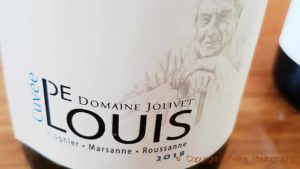 Saint Joseph is mostly red wines made from Syrah. Only 10 % is white from Marsanne and Roussanne. The soil is mainly granite. If you like Syrah this is a region to be on the lookout for. The wines here are often a bit less powerful and more on the fruity side compared to Crozes-Hermitage. Saint-Joseph is often good value for money. Before taking over the family vineyards Bastien spent time working in wineries in South Africa and New Zealand. It was a good experience, he says. He adds though that he is more influenced by the French way of doing things.
Saint Joseph is mostly red wines made from Syrah. Only 10 % is white from Marsanne and Roussanne. The soil is mainly granite. If you like Syrah this is a region to be on the lookout for. The wines here are often a bit less powerful and more on the fruity side compared to Crozes-Hermitage. Saint-Joseph is often good value for money. Before taking over the family vineyards Bastien spent time working in wineries in South Africa and New Zealand. It was a good experience, he says. He adds though that he is more influenced by the French way of doing things.
Read more in Britt’s article on BKWine Magazine, originally published on Forbes.com: New star in Saint Joseph: Domaine Bastien Jolivet, superb red and white wines | Britt on Forbes.
Wine tourism at Vinuri de Comrat in Moldova, a passionate project
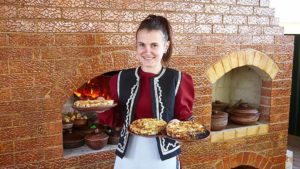 In the very south of Moldova, in the region of Gagauzia, the road signs are written in Cyrillic, “Russian” letters. This is a Russian speaking region of Moldova. It is also a wine region called Valul lui Traian. We find some exciting wineries in this region, such as Novak, Fautor and Gitana Winery. We are here to visit Vinuri de Comrat, situated in the town with the same name. Comrat is an ambitious and exciting wine tourism project, still in process but very promising. The buildings, the oldest one date from 1894, have now been carefully restored. It was a huge task. It took time to clean and restore the stone to its original splendour. “But it is important to keep something from the old times, everything shouldn’t be brand new”, says general director Anatolii Hmelevschi. “We want to become an important tourist destination, unique for Moldova”, he continues.
In the very south of Moldova, in the region of Gagauzia, the road signs are written in Cyrillic, “Russian” letters. This is a Russian speaking region of Moldova. It is also a wine region called Valul lui Traian. We find some exciting wineries in this region, such as Novak, Fautor and Gitana Winery. We are here to visit Vinuri de Comrat, situated in the town with the same name. Comrat is an ambitious and exciting wine tourism project, still in process but very promising. The buildings, the oldest one date from 1894, have now been carefully restored. It was a huge task. It took time to clean and restore the stone to its original splendour. “But it is important to keep something from the old times, everything shouldn’t be brand new”, says general director Anatolii Hmelevschi. “We want to become an important tourist destination, unique for Moldova”, he continues.
Read more in Britt’s article on BKWine Magazine: Wine tourism at Vinuri de Comrat in Moldova, a passionate project.
Understand Syrah, a spicy and popular grape, with our grape variety profile | Britt on Forbes
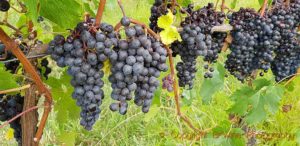 Syrah is the fourth most planted red grape in the world after cabernet sauvignon, merlot, and tempranillo. Syrah is found on almost 190,000 hectares across the globe. It is today a fashionable and popular grape that is expanding its territory in many countries. It is not surprising. Syrah is a grape full of character. Here we give you an overview of its characteristics and where it is grown in the world. This is an article in our series of presentations of the world’s most popular and exciting grape varieties.
Syrah is the fourth most planted red grape in the world after cabernet sauvignon, merlot, and tempranillo. Syrah is found on almost 190,000 hectares across the globe. It is today a fashionable and popular grape that is expanding its territory in many countries. It is not surprising. Syrah is a grape full of character. Here we give you an overview of its characteristics and where it is grown in the world. This is an article in our series of presentations of the world’s most popular and exciting grape varieties.
Read more in Britt’s article on BKWine Magazine: Syrah, spicy and fruity and more and more popular | grape variety profile | Britt on Forbes
Recognise the characteristics of cabernet sauvignon with a tasting of three well-chosen wines
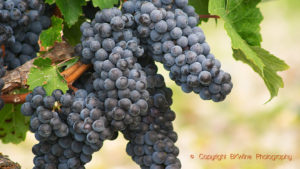 Cabernet Sauvignon is grown in virtually all wine countries around the world. It is the world’s most popular – most planted – grape variety. The best way to discover the many different faces of cabernet sauvignon is to organize a wine tasting with wines from different countries and regions. Soon you will be able to see for yourself the differences and similarities. And you can answer the question: Is it always possible to recognize a cabernet sauvignon? In France, cabernet sauvignon is found not only in Bordeaux. Compare classic Médoc with cabernet from the warmer Provence region and a more modern version of the grape from the Languedoc. Taste muscular cabernet wines from California and fruity ones from Chile.
Cabernet Sauvignon is grown in virtually all wine countries around the world. It is the world’s most popular – most planted – grape variety. The best way to discover the many different faces of cabernet sauvignon is to organize a wine tasting with wines from different countries and regions. Soon you will be able to see for yourself the differences and similarities. And you can answer the question: Is it always possible to recognize a cabernet sauvignon? In France, cabernet sauvignon is found not only in Bordeaux. Compare classic Médoc with cabernet from the warmer Provence region and a more modern version of the grape from the Languedoc. Taste muscular cabernet wines from California and fruity ones from Chile.
Get our suggestions for wine to taste in Britt’s article on BKWine Magazine: Learn the taste of cabernet sauvignon; with a tasting of wines from three countries.
Travel: Travel with us at BKWine on a wine tour to Bordeaux
A pioneer and legend in New Zealand’s famous pinot noir region: Blair Walter at Felton Road Wines | Britt on Forbes
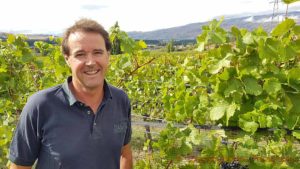 New Zealand is a young wine country, and Central Otago on the South Island is even younger. It is also a spectacularly beautiful region where you find superb wines from the tricky pinot noir. One of the pioneers here, and also one of the most famous wine estates in New Zealand, is Felton Road. For the pinot noir lover, it is certainly worthwhile looking for wines from Central Otago. The fortune-hunters from the gold mining era of the mid-1800s have been replaced by ambitious and just as adventurous winemakers.
New Zealand is a young wine country, and Central Otago on the South Island is even younger. It is also a spectacularly beautiful region where you find superb wines from the tricky pinot noir. One of the pioneers here, and also one of the most famous wine estates in New Zealand, is Felton Road. For the pinot noir lover, it is certainly worthwhile looking for wines from Central Otago. The fortune-hunters from the gold mining era of the mid-1800s have been replaced by ambitious and just as adventurous winemakers.
Read more on this producer, including a video with the winemaker in the vineyard, in Britt’s article on BKWine Magazine: Felton Road: quality Pinot Noir from Central Otago, New Zealand | Britt on Forbes.
Travel: Travel with us at BKWine on a wine tour to New Zealand
Wine tours
Some information about current and future wine tours with BKWine.
Leave rain and snow behind and travel with us to the southern hemisphere’s New World wine countries | wine tours
We have three long haul tours on the program winter program 2021. The three tours will take you to Chile/Argentina, New Zealand and South Africa, exciting and interesting wine countries, each of them giving you an unforgettable experience. What the winter of 2021 will look like is still a bit uncertain. We will follow the development closely.
If you are interested in any of these three trips, feel free to contact us with any questions.
Chile and Argentina, January 2021
 Our tour takes us to South America’s leading wine countries, Chile and Argentina. Mendoza is close to the Chilean border, with only the mighty Andes in between. We cross the border with our bus at over 3000 meters altitude (9000 ft). The wine is our main focus but we also have time to visit Buenos Aires and Santiago and the exciting port city of Valparaiso. Our lunches at the wineries, often outdoor asados, are unforgettable.
Our tour takes us to South America’s leading wine countries, Chile and Argentina. Mendoza is close to the Chilean border, with only the mighty Andes in between. We cross the border with our bus at over 3000 meters altitude (9000 ft). The wine is our main focus but we also have time to visit Buenos Aires and Santiago and the exciting port city of Valparaiso. Our lunches at the wineries, often outdoor asados, are unforgettable.
New Zealand, February 2021
 New Zealand is far from everything. That’s part of the charm. It is an unusual New World country, cooler and with completely different styles of wine. The quality of the wines is generally very high. There’s a lot of ambition as well as excellent execution. It is a very new wine country and the pioneering spirit still remains. We will also get to know the local gastronomy, see the breath-taking nature and experience all sorts of things.
New Zealand is far from everything. That’s part of the charm. It is an unusual New World country, cooler and with completely different styles of wine. The quality of the wines is generally very high. There’s a lot of ambition as well as excellent execution. It is a very new wine country and the pioneering spirit still remains. We will also get to know the local gastronomy, see the breath-taking nature and experience all sorts of things.
South Africa, March 2021
 South Africa’s grapes are grown in the beautiful Western Cape. We visit Franschhoek, Elgin, Hemel-en-Aarde, Stellenbosch, Swartland and of course Cape Town with Table Mountain. Delicious meals, spectacular scenery and talented winemakers await us. An exciting safari is offered after as an add-on after the wine tour if you wish.
South Africa’s grapes are grown in the beautiful Western Cape. We visit Franschhoek, Elgin, Hemel-en-Aarde, Stellenbosch, Swartland and of course Cape Town with Table Mountain. Delicious meals, spectacular scenery and talented winemakers await us. An exciting safari is offered after as an add-on after the wine tour if you wish.
European wine tours spring 2021 and a preview of the autumn: Bordeaux and Champagne
For the spring 2021 we have two exciting wine tours on our program: Bordeaux and Champagne. By spring 2021 we hope and expect that the world has returned to a little bit more of a normal situation. Here’s what we currently have to offer the enthusiastic wine lover for spring 2021, including dates also for the autumn of 2021:
Bordeaux, behind-the-scene of grand chateaux | wine tour
 Bordeaux is a style that has spread over the world. Bordeaux blends are made everywhere. Bordeaux has inspired so many winemakers. Discover the original Bordeaux with us. Magnificent chateaux, fabulous lunches. A memorable tour.
Bordeaux is a style that has spread over the world. Bordeaux blends are made everywhere. Bordeaux has inspired so many winemakers. Discover the original Bordeaux with us. Magnificent chateaux, fabulous lunches. A memorable tour.
- Wine tour to Bordeaux, April 21-25, 2021
- Wine tour to Bordeaux, September 29 – October 3, 2021 (This autumn tour will also be offered in combination with the Champagne tour; more details will soon be available on our website)
Champagne, a wide variety of styles | wine tour
 In the beautiful spring weather, we visit magnificent wine cellars and learn all the details about how to make champagne and what is important for the quality. We will discover a variety of different champagne styles, from small houses, bigger houses and grower champagnes.
In the beautiful spring weather, we visit magnificent wine cellars and learn all the details about how to make champagne and what is important for the quality. We will discover a variety of different champagne styles, from small houses, bigger houses and grower champagnes.
- Wine tour to Champagne, May 19-23, 2021
- Wine tour to Champagne, September 22-26, 2021 (this tour will also be offered in combination with the Bordeaux tour; more details will soon be available on our website)
Don’t be an egoist! Share with your friends and other wine enthusiasts! Forward the Brief to your friends! Suggest that they sign up for a free subscription !
© Copyright BKWine


